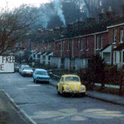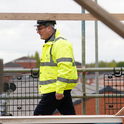Sleeping bags, tents and shivering bodies are increasingly evident on our streets. Tallying up people who have, almost by definition, fallen through the system is inherently imprecise. But official figures point to a 170 per cent rise in rough sleeping since austerity bit—reversing a decade of progress before the recession. The numbers were calculated differently then, but the trend was the opposite—sharply downwards.
Properly targeted policies can make a big difference to rough sleeping, because the absolute numbers involved are modest. Rough sleeping is only ever the visible tip of a homelessness iceberg, which also includes many others who rely on forms of temporary shelter—pay-by-the-evening hostels, friends’ sofas or emergency digs provided by councils.
This broader category is significantly larger, nearly 80,000 people—about the same as the electorate in a typical constituency, or the whole prison population of England and Wales. Since 2015, Shelter has produced another, more comprehensive, count of homelessness which records a near-10 per cent rise from 294,000 to 320,000 in just three years.
So what is driving homelessness? Family breakdown is always a big trigger, but it is a perennial. Official analysis suggests the proximate cause of many of the extra cases in recent years has been the termination of England’s ubiquitous short tenancies. But as Chris Wood of Shelter explains this is indicative of many deeper problems: “unaffordable private rents in a landlords’ market, where renters are evicted for complaining about unsafe conditions.” And the solutions? “We need more social homes, new protections for renters, and benefit levels restored so they actually cover the rent.”

Out on the streets Not long ago rough sleeping had become rare, but it’s back with a vengence
Speed data: Just how bad is Britain's homelessness problem?
Growing numbers of people can’t rely on a roof over their head
January 25, 2019












